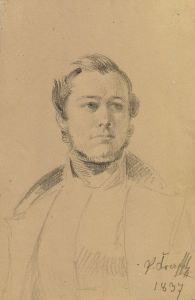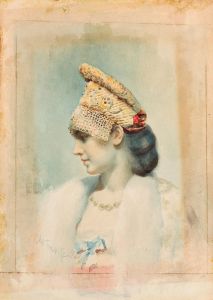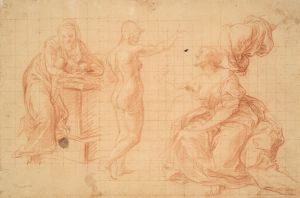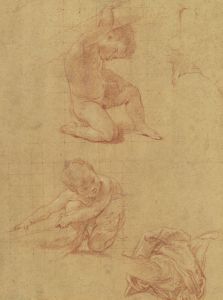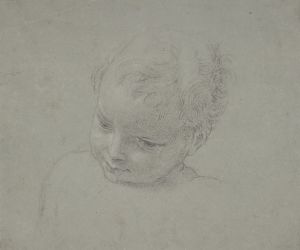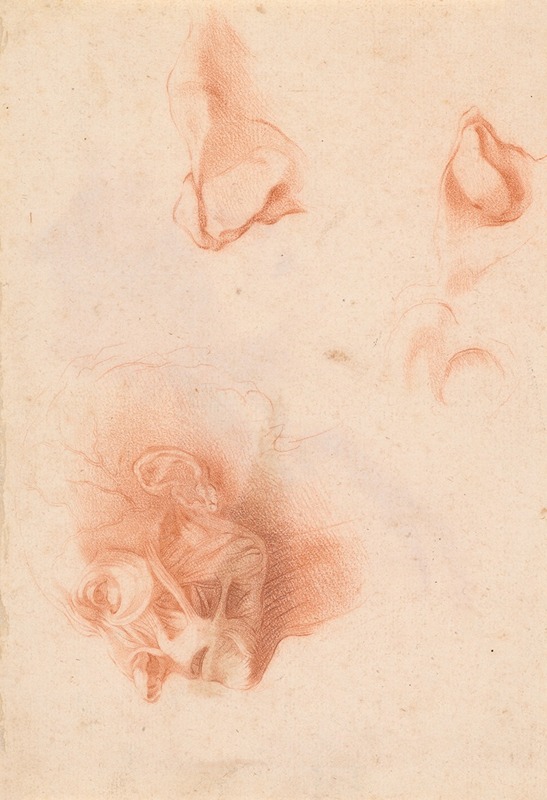
Anatomical Study, Face in Profile
A hand-painted replica of Pompeo Batoni’s masterpiece Anatomical Study, Face in Profile, meticulously crafted by professional artists to capture the true essence of the original. Each piece is created with museum-quality canvas and rare mineral pigments, carefully painted by experienced artists with delicate brushstrokes and rich, layered colors to perfectly recreate the texture of the original artwork. Unlike machine-printed reproductions, this hand-painted version brings the painting to life, infused with the artist’s emotions and skill in every stroke. Whether for personal collection or home decoration, it instantly elevates the artistic atmosphere of any space.
Pompeo Batoni (1708–1787) was an Italian painter renowned for his portraits and historical paintings. One of his notable works is "Anatomical Study, Face in Profile." This artwork exemplifies Batoni's meticulous attention to detail and his profound understanding of human anatomy, which was a significant aspect of his artistic training and practice.
Pompeo Batoni was born in Lucca, Italy, and later moved to Rome, where he established himself as one of the leading painters of his time. He was particularly known for his ability to blend the grand manner of history painting with the intimate realism of portraiture. His works were highly sought after by both the European aristocracy and the burgeoning class of wealthy travelers undertaking the Grand Tour.
"Anatomical Study, Face in Profile" is a fine example of Batoni's skill in capturing the human form with precision and sensitivity. The painting focuses on the profile of a human face, meticulously rendered to highlight the anatomical structure beneath the skin. This study would have been part of Batoni's broader interest in anatomy, which was essential for artists of his time to master in order to create lifelike and dynamic representations of the human body.
The artwork demonstrates Batoni's ability to convey the subtleties of the human face, including the bone structure, muscles, and skin texture. His use of light and shadow adds depth and dimension to the profile, making it appear almost three-dimensional. This technique reflects the influence of the Baroque tradition, which emphasized dramatic contrasts and a strong sense of volume.
Batoni's anatomical studies were not merely academic exercises; they were integral to his approach to portraiture. By understanding the underlying structure of the human body, he was able to create portraits that were not only realistic but also imbued with a sense of vitality and character. His portraits often captured the personality and status of his sitters, making them highly prized by his contemporaries.
"Anatomical Study, Face in Profile" also reflects the broader cultural and scientific interests of the 18th century. During this period, there was a growing fascination with the human body and its workings, spurred by advances in medical science and anatomy. Artists like Batoni contributed to this knowledge through their detailed and accurate representations of the human form.
In summary, "Anatomical Study, Face in Profile" by Pompeo Batoni is a testament to the artist's technical prowess and his deep understanding of human anatomy. It exemplifies the intersection of art and science in the 18th century and highlights Batoni's significant contributions to the field of portraiture. His ability to capture the essence of his subjects with both anatomical accuracy and expressive detail made him one of the most celebrated painters of his time.





